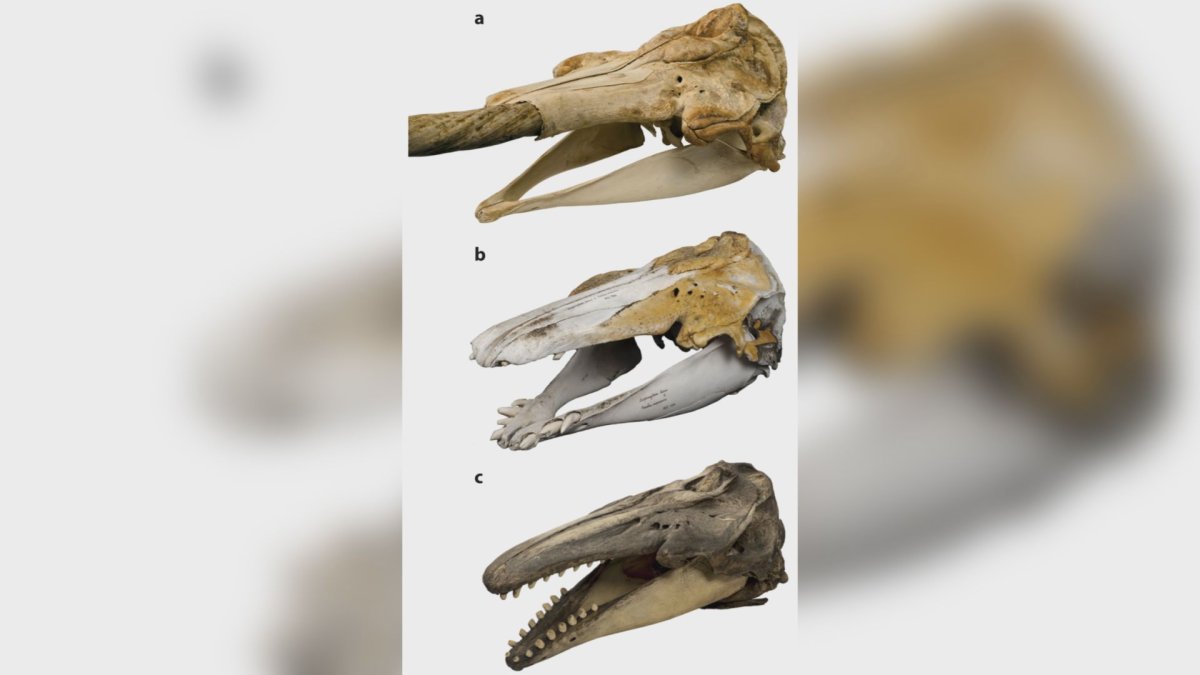The co-study of a 30-year-old whale skull by a professor at Trent University in Peterborough, Ont., has determined it is the offspring of a beluga and a narwhal.

A study published Thursday in Scientific Reports shows the results of a DNA and chemical analysis performed on the skull which was originally discovered by an Inuit hunter in Greenland.
Danish biologist Mads Peter Heide-Jørgensen found the skull in the hunter’s toolshed in 1990. It has been at the Zoological Museum, a part of the Natural History Museum of Denmark, ever since.
Trent University anthropology professor Dr. Paul Szpak, Canada Research chair in environmental archeology, was part of the international collaboration that proved the skull came from the offspring of a narwhal mother and beluga father which mated decades ago.
“To get the chance to analyze material from an animal that nobody has ever worked with before has been extremely cool,” stated Szpak in a release from the university. “The findings also teach the world about the biology of belugas and narwhals and how the two species interact.”

Get breaking National news
The offspring is being dubbed “narluga” — the first-ever confirmed hybrid of the two Arctic marine mammals.
“Precisely where this interspecies romance took place is not clear,” Szpak wrote in his blog. “Both belugas and narwhals are migratory, and we have fairly limited knowledge about where they go throughout the year.”
At his lab, Szpak performed a technique called isotope ratio mass spectrometry on the hybrid remains and on other belugas and narwhals. He found that the “narluga” had a diet which was very different from its parents.
Szpak believes the different feeding habits may be due to the hybrid’s “strange” teeth: a mixture of the beluga’s long and peg-like teeth and some in the lower jaw corkscrew-like resembling miniature tusks of the narwhal.
“We know that this individual must have had this unique diet for all of its life, possibly because his very unusual teeth forced him to specialize on consuming prey that were not typically eaten by belugas or narwhals,” he said.
Szpak and the study’s other team members in Copenhagen will be collaborating on other projects to better understand the biology of Arctic mammals including belugas, narwhals, bowhead whales and polar bears.
WATCH: New drone footage offers clearest look yet at B.C.’s rare white orca









Comments